
Academic Excellence, Grades 5-8 Conference Handout
Note: This is a conference handout from a workshop. Audio for this workshop is currently unavailable.
ACADEMIC EXCELLENCE, 5-8
Susan Wise Bauer
Please do not reproduce without permission. Give appropriate credit for ideas and quotes. This material is adapted from The Well-Trained Mind: A Guide to Classical Education at Home.
The Pert age…is characterized by contradicting, answering back, liking to “catch people out” (especially one’s elders); and by the propounding of conundrums. Its nuisance-value is extremely high.
– Dorothy Sayers, “The Lost Tools of Learning”
The distinctives of classical education
The three developmental states of education
“Grammar stage” (elementary school years, roughly grades 1-4)
The years in which the building blocks for learning are laid.
Strengths: the mind is ready to absorb information
memorization is fun and generally easy
Weaknesses: undeveloped capacity for abstract or critical thought
“Logic stage” (middle school years, roughly grades 5-8)
The development of analytical thinking skills and abstract thought.
Strengths: Developing ability for abstraction and criticism
Weaknesses: Immature exercise of those skills
Logic: learn to evaluate validity of arguments
Literature: begin to ask questions about characters, plots,
motivations, techniques
Spelling: increasing application of rules to written work
Grammar: diagramming and outlining
Writing: outlining and using outlines for compositions
Mathematics: move towards abstraction (pre-algebra and
algebra)
History: focus on cause and effect, on chronology and relationships
between countries
Science: experimentation of the scientific disciplines
“Rhetoric stage” (high school years, roughly grades 9-12)
Learning to write and speak with force and originality.
Characterized by: Development of a specialty
Use of Great Books
Distinctives of classical teaching
Language intensive (reflective, not reactive)
Trains the mind to analyze and draw conclusions
Through conversation
Through the use of original sources
Trains the student in self-discipline.
A useful distinction: Skills and content areas.
LOGIC 1) The premise (the facts you start with–statements), 2) The argument (the deductions you make from these facts), and 3) The conclusion (your final deduction–another statement). A fallacy is a flaw somewhere in the process–an incorrect argument, a lousy premise, or an incorrect deduction.
The study of logic has two parts:
1) A critical thinking warmup, grades 5-6 Critical Thinking Press (www.criticalthinking.com) Building Thinking Skills: vocabulary, pattern-recognition, sequencing, etc. (both verbal and mathematical) Mind Benders: weighted towards verbal problems Critical Thinking, Books 1 and 2: weighted towards narrative
2) An actual logic course: Martin Cothran, Traditional Logic I and II (text, teacher key, DVD instruction) www.memoriapress.com (also hosts online academy)
MATHEMATICS
9×2= 18
(-5)(x)=-15
Real life math problems…
Figuring out the family’s grocery budget for a week (or a month); finding the best buys at the grocery store
Figuring out expenses and profits for a kid-run home business — grass-cutting, pet-tending, babysitting, baking
Balancing a checkbook (better now than in college)
Figuring out the monthly and yearly interest on a credit-card debt (ditto)
Calculating the area of a room, a wall, or the entire house for wallpapering, carpeting, or another home project
Figuring out the actual cost of driving the car to and from a special event
Figuring out how much a restaurant meal would cost if cooked at home
Calculating the cost in work-hours of movie tickets, concert passes, or other types of entertainment
Altering a recipe so that it serves a different number of people — reducing a six-person dish to serve two, or (more complicated) rewriting a three-person recipe to serve nine or eleven
Working out the itinerary for a family trip, complete with routes, timetables, and scheduled stops
A resource for family math: Family Math, by Jean Stanmark (Equals)m available from Rainbow Resource Center
A few programs:
Saxon Math, saxonpublishers.com
A Beka Math, abekabook.com
Singapore Math, singaporemath.com
Math-U-See, mathusee.com
Calvert Math, calvertschool.org
Life of Fred, polkadotpublishing.com
The Saxon “problem”
SAXON
Seventh grade Algebra 1/2
Eighth grade Algebra I
Ninth grade Algebra II
Tenth grade Advanced Mathematics
Eleventh grade Calculus
Twelve grade Elective
SCIENCE
In every field, the student should know how the scientist conducts experiments — the biologist, the astronomer, the chemist, the physicist.
Fifth grade: Biology
Sixth grade: Earth science and astronomy
Seventh grade: Chemistry
Eighth grade: Physics
Biology
Creepy Crawlies and the Scientific Method, Sally Stenhouse Kneidel (book)
Owl Pellet Dissection Kit
Bug Hunt Kit
Carnivorous Creations Terrarium Kit
Smithsonian Bio Dome Habitat
Basic 5 Animals Dissection Kit
Blood Typing Kit
Fingerprint Kit
Minds Eye: Optical Illusions & Human Perception..
Botanical Discoveries Science Fair Kit
Microscope & Biology Kit
Fetal Pig Anatomy Lab
Biological Inheritance and Genetic Engineering
Earth Science
National Geographic Earthquakes & Volcanoes Experiment Kit
Smithsonian Weather Center Science Kit
Volcano: Power Tech Series
Crystal PRO Crystal Growing & Crystallography Kit
Wind Power: Renewable Energy Science Kit
Astronomy
Primer for the Beginning Astronomer/Astromax Introductory Astronomy Binocular Kit
Space Exploration: The Planets, Moon, Sars, Solar System & Rockets
Slooh Telescope Card and Book
Chemistry
Thames & Kosmos CHEM2000 chemistry kit and 251-experiment manual
Mastering the Periodic Table: Exercises on the Elements, Linda Trombley and Thomas G. Cohn (book)
Physics
Backyard Ballistics: Build Potato Cannons, Paper Match Rockets, Cincinnati Fire Kites, Tennis Ball Mortars, and More Dynamite Devices, William Gurstel (book)
Physics Discovery
Physics Workshop
Physics Solar Workshop
Supercharged Science: Physics Kit
Supercharged Science: Electricity and Robotics Kit
Supercharged Science: Laser Show Kit
Introduction to Electronics
Kite Dynamics
Physics Pro
HISTORY
The chronological study of history: History in perspective
Three repetitions of the same four-year pattern
Ancients BC 5000 to 400 AD Medieval/Early Renaissance 400-1600 AD Late Renaissance/Early Modern 1600-1850 AD Modern Times 1850-Present Day
Doing history without a textbook
Choose a base text:
Usborne Internet-Linked Encyclopedia of World History
Dorling Kindersley History of the World
National Geographic Almanac of World History
History: The Definitive Visual Guide (Dorling Kindersley)
Kingfisher History Encyclopedia (difficult availability)
1) Read and summarize or outline a section from your history resource
2) Mark all dates on the time line
3) Find the region under study on the globe, the wall map, and in the atlas
4) Do additional reading from the library, including primary sources when possilbe, depending on the child’s interest.
5) Summarize the information in one of these additional resources in a 2-4 paragraph composition.
Outlining
Fifth grade:
I.
II.
III.
Sixth grade:
I. First main point
A. First supporting point
B. Second supporting point
II. Second main point
A. First supporting point
B. Second supporting point
C. Third supporting point
Seventh and eighth grade:
I. First main point
A. First supporting point
1. Detail
Sample additional resources:
Joy Hakim’s A History of US series: readable, written in story format, and interesting.
Volume 2: Making Thirteen Colonies (1607-1732)
The American Revolution by Bruce Bliven, first published in 1958
A Gathering of Days: A New England Girl’s Journal 1830-32. The Newbery Award-winning journal of a teenage girl in colonial New Hampshire.
A coloring book of The American Revolution, Bellerophon. Based on a set of eighteenth-century caricatures, $3.95.
Use and Evaluation of Primary Sources
Jackdaws
The Mayflower and the Pilgrim Fathers, nine primary sources, five Broadsheet Essays
The American Revolution, eighteen primary sources, five Broadsheet Essays
The Making of the Constitution, nine primary sources, fiveBroadsheet Essays
www.jackdaw.com
Internet History Sourcebooks Project,
http://www.fordham.edu/halsall/
LANGUAGE ARTS: READING, WRITING AND GRAMMAR
Reading
Avoid “literature programs”; instead, key a reading list to the history curriculum.
Fifth grade Readings from/about the Ancients, 5000 BC til 400 AD
Sixth grade Readings from/about the Middle Ages and early Renaissance, 400-1600 AD
Seventh grade Readings from/about the late Renaissance and early Modern period, 1600-1850
Eighth grade Readings from/about the Modern period, 1850-present
This study serves as preparation for Great Books study in high school
Procedure:
1) Read
2) Talk
3) Write
1) Read. The process is simple: you’re going to assign the child imaginative readings that roughly correspond to the period under study in history. (An hour, three times per week.)
2) Talk. Then you’re going to talk to the child about the book: What is or isn’t important in the plot, whether the characters are heroes or villains.
For a novel/story:
Who is this book about? (central character[s])
What do the central characters want?
What keeps them/him/her from getting it?
How do they/him/her get what they want?
Do they have an enemy or enemies? Is there a villain?
What does the villain want?
What do you think is the most important event in the
story?
What leads up to this event?
How are the characters different after this event?
Pick out the most important event in each chapter.
How many different stories does the writer tell?
For a biography: What kind of family did the subject come from? What were his/her parents like? Where did he go to school? What did he want the most as a child? As a grownup? How did he go about getting it? Name three or four important people in his life. Did he/she get married? To whom? When? Did they have children? What was the most important event in his life? Name three other important events in his life. Did he get what he wanted in life? Why or why not? Why do we still remember this person?
For evaluation: What was the most exciting part of the book? What was the most boring part of the book? Did you like the character[s]? Why or why not? Did you hope that he/she would get what he/she wanted? Did any part of the book seem particularly real? Did any part of the book seem unlikely to you? Did you hope it would end in another way? How? Would you read this book again? Which one of your friends would enjoy this book?
4) Write.
Fifth and sixth grade: summarize the book or some part of it in 1/2 to 1 page.
Seventh and eighth grade: answer one of the above questions.
Sample readings:
Fifth grade, Ancients: BC 5000-400 AD
Roger Lancelyn Green, Tales of the Greek Heroes, Tales of Ancient Egypt
Black Ships Before Troy: The Story of THE ILIAD, Rosemary Sutcliffe, illustrated by Alan Lee
English Fables and Fairy Stories, James Reeves
Scandinavian Legends and Folk-Tales, Gwyn Jones
Japanese Tales and Legends, Helen and William McAlpine
India’s Tales and Legends, J. E. B. Gray
African Myths and Legends, Kathleen Arnott
The Golden Goblet, Eloise Jarvis McGraw
The Bronze Bow, Elizabeth George Speare.
Outcast, Rosemary Sutcliff.
Sixth grade, Middle Ages/Early Renaissance: 400-1600 AD
Beowulf: A New Telling, by Robert Nye
Sir Gawain and the Green Knight, verse translation by J.R. R. Tolkein
Canterbury Tales, retold by Geraldine McCaughrean
Dante’s Inferno, Cantos I-V, trans. Robert Pinsky
Saint George and the Dragon, from Spenser’s The Fairy Queen retold by Margaret Hodges
The Boy’s King Arthur : Sir Thomas Malory’s History of King Arthur and His Knights of the Round Table Edited by Sidney Lanier, original illustrations by N.C. Wyeth.
The Sword in the Stone, T. H. White
Shakespeare Stories, by Leon Garfield
Seventh grade, Late Renaissance/Early Modern: 1600-1850
Don Quixote, abridged (Walter Starkie)
Robinson Crusoe, Daniel Defoe
“The Rime of the Ancient Mariner,” Samuel Taylor Colderidge
The Adventures of Tom Sawyer, Mark Twain
Narrative of the Life of Frederick Douglass, Frederick Douglass
Eighth grade, Moern: 1850-present
Kidnapped, Robert Louis Stevenson
Little Women, Louisa May Alcott
The Time Machine, H. G. Wells
The Yearling, Marjorie Kinnan Rawlings
“The Road Not Taken” and other poems, Robert Frost
A Man for All Seasons, Robert Bolt
WRITING
In the classical curriculum, the student is already writing summaries in history and literature and is moving towards written arguments. In addition to this content-based writing his can also use a “writing program.”
Writing Strands
Institute for Excellence in Writing
Wordsmith
Classical Writing
Rod & STaff
GRAMMAR
Continue to use a programmed grammar curriculum:
Rod & Staff
Voyages in English
Analytical Grammar
Essential: Exercises in diagramming and outlining.
SPELLING AND WORD STUDY
Transition from spelling to word study. The student can begin to keep a Word Notebook with prefixes, suffixes, and roots:
PREFIX SUFFIX MEANING/FUNCTION LANGUAGE (if given)
contra opposite, against Latin
ROOT MEANING LANGUAGE functio to perform Latin polis city Greek
Go back to the Well Trained Mind Home or Workshops and Handouts page.
See also the complete article index.



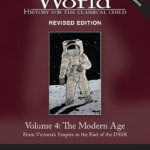
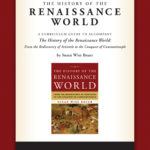
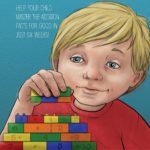
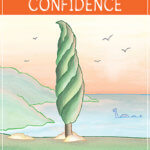

1 thought on “Academic Excellence, Grades 5-8 Conference Handout”
Hello,
This was a serendipitous find! I think it looks pretty interesting and provides a good summary of a classical education. I am disturbed that this includes Joy Hakim’s History of US in the list of acceptable resources. (see below) If ever I found a children’s history publication to avoid, it is this one. It is replete with biased racial and gender entries. When I considered this for my children years ago, I was initially quite impressed with the photos and layout of the books, but upon actually reading it, I rejected it completely. Please reconsider this resource.
From the handout:
Sample additional resources:
Joy Hakim’s A History of US series: readable, written in story format, and interesting. Volume 2: Making Thirteen Colonies (1607-1732)